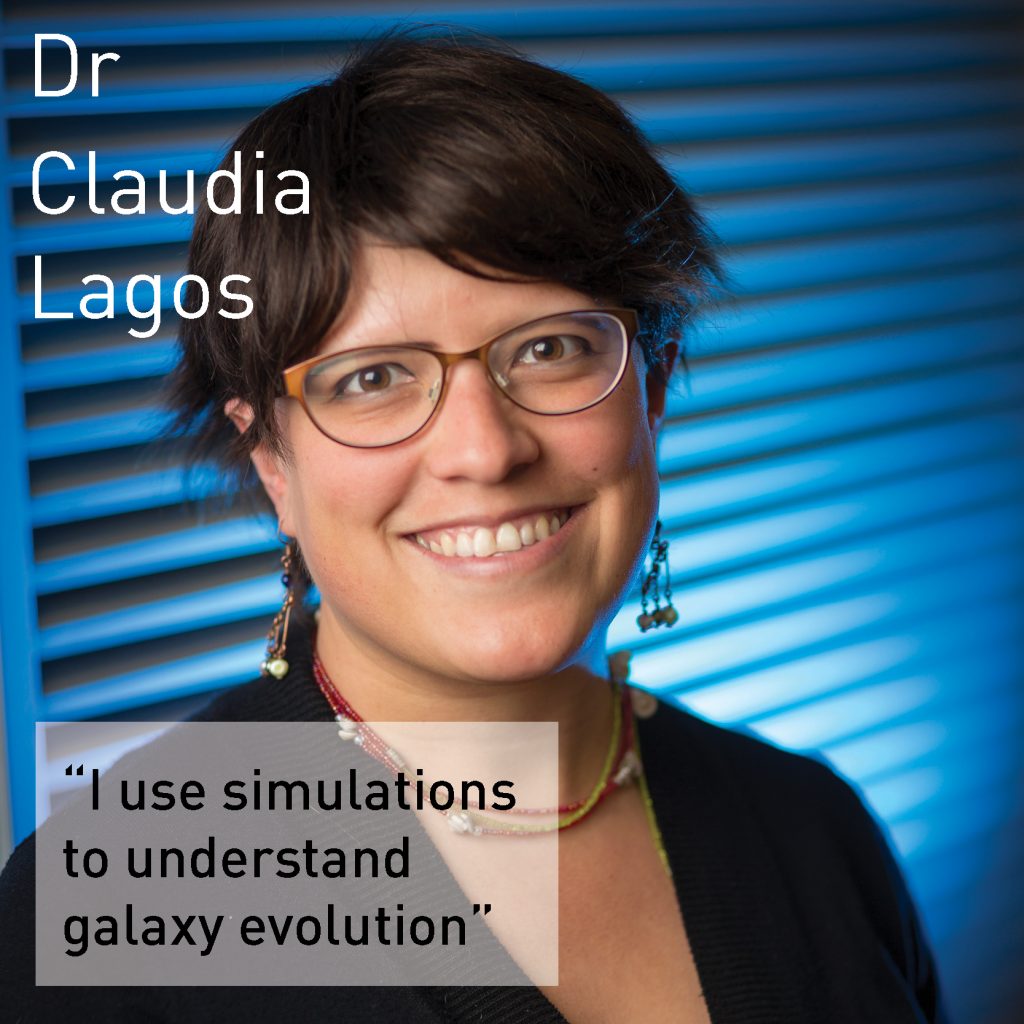“I use computer simulations to understand the physics that drives the evolution of galaxies.”
Dr Claudia Lagos uses computer simulations to create galaxies and compare their physical properties to what has actually been observed in both radio and optical wavelengths, in an attempt to find out how these galaxies evolved.
“My expertise is in modelling of physical processes in galaxies, such as gas accretion onto galaxies, star formation, stellar feedback, gas accretion onto black holes, among other similar mechanisms.”
In the last years there’s been several breakthroughs in simulations, and computational astrophysicists like Dr Lagos are at the point where simulations can reproduce observations accurately and even predict galaxy evolution.
Something that Dr Lagos is also excited about is the work that her 5 PhD students are doing. She says that they’re all doing really nice work, looking for the proverbial smoking gun of how gas is coming into galaxies.
“I like the challenge of how to think, how you build physical models and program them, how you write code that’s sustainable, efficient, and reproducible by others.”
Dr Lagos is proud of her latest paper, which includes code that she’s written over the last two years in conjunction with the Data Intensive Astronomy team at ICRAR. “It’s completely open source, and people now in the world are starting to use it. So it’s super exciting.”
“You can start to see the impact beyond people just citing it, actually people taking the code, using it, producing their own science. I think that’s amazing.”
